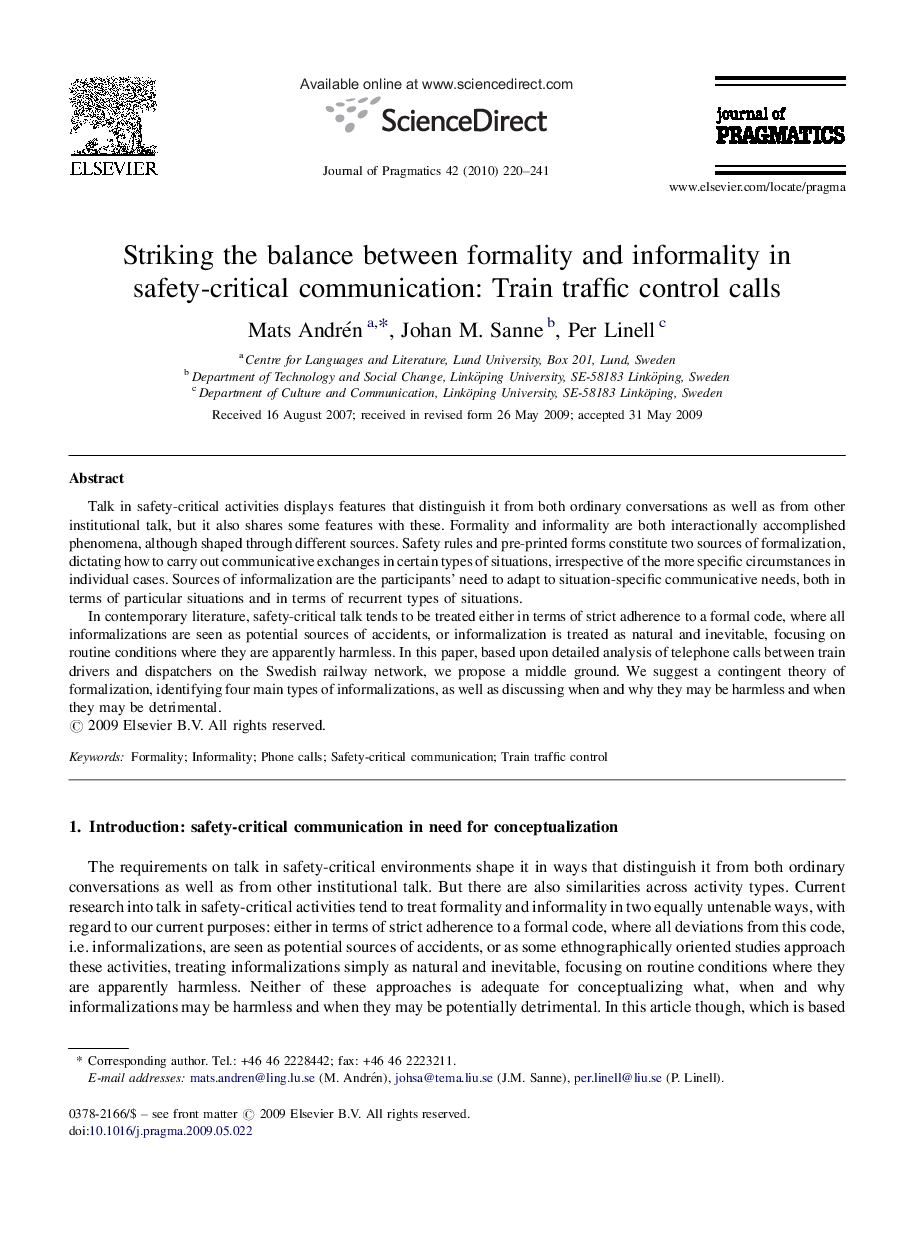| Article ID | Journal | Published Year | Pages | File Type |
|---|---|---|---|---|
| 933646 | Journal of Pragmatics | 2010 | 22 Pages |
Talk in safety-critical activities displays features that distinguish it from both ordinary conversations as well as from other institutional talk, but it also shares some features with these. Formality and informality are both interactionally accomplished phenomena, although shaped through different sources. Safety rules and pre-printed forms constitute two sources of formalization, dictating how to carry out communicative exchanges in certain types of situations, irrespective of the more specific circumstances in individual cases. Sources of informalization are the participants’ need to adapt to situation-specific communicative needs, both in terms of particular situations and in terms of recurrent types of situations.In contemporary literature, safety-critical talk tends to be treated either in terms of strict adherence to a formal code, where all informalizations are seen as potential sources of accidents, or informalization is treated as natural and inevitable, focusing on routine conditions where they are apparently harmless. In this paper, based upon detailed analysis of telephone calls between train drivers and dispatchers on the Swedish railway network, we propose a middle ground. We suggest a contingent theory of formalization, identifying four main types of informalizations, as well as discussing when and why they may be harmless and when they may be detrimental.
